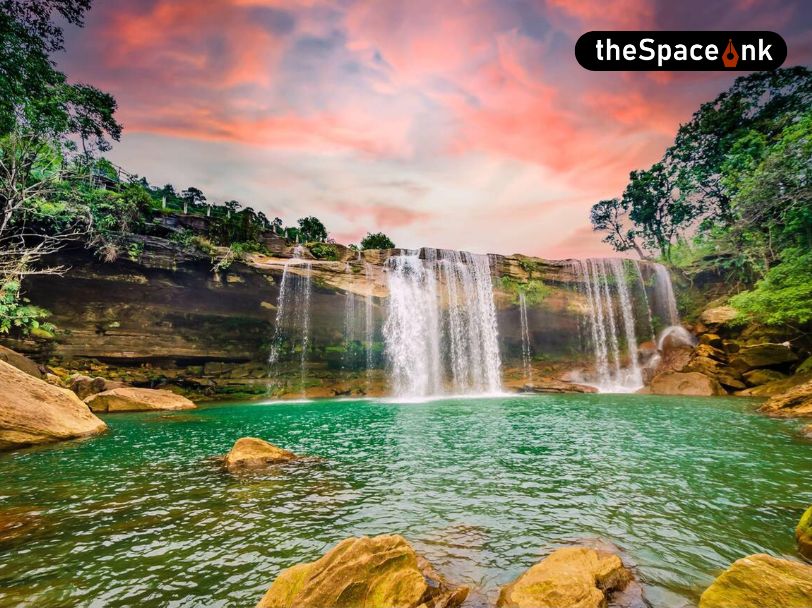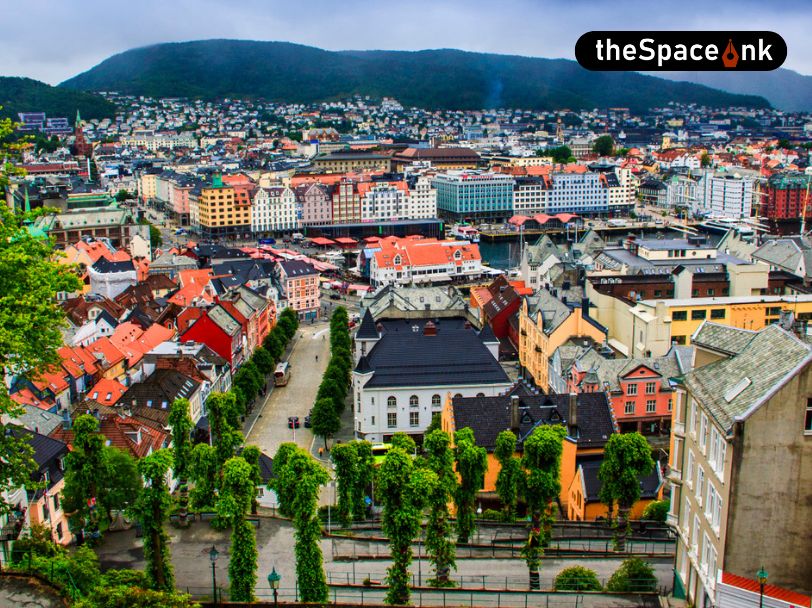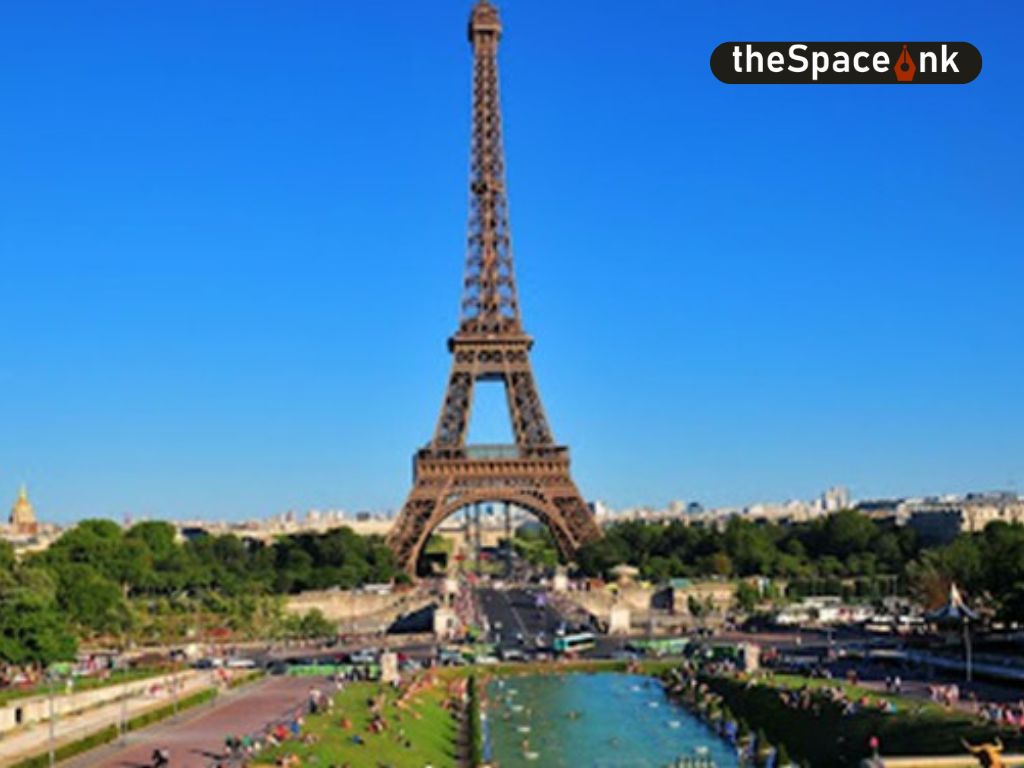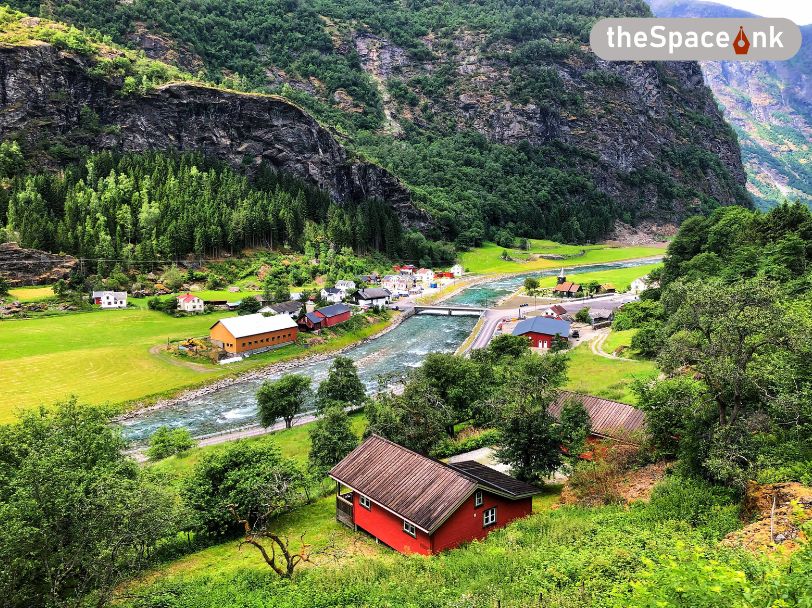31st December, 2021
My past visits had never brought me to this part of Santiniketan. Actually an ordinary tourist in search of a short weekend fun trip, is seldom brought to this part. So, as the Toto wound along the narrow shady streets, past lonely houses with large gardens, I grew more and more interested. I was into the heart of Gurupalli, the abode of the ‘Gurus’ or teachers of a nascent Viswa Bharati, as envisaged by Tagore a century ago. We reached the farthest end, past Hathi Pukur or the Elephant Pond, named after a huge structure of an elephant beside the pond and stopped in front of a gate. An interesting vintage building lay beyond the gate and pebbled driveway, which immediately attracted my attention. As we entered the gate accompanied by Surajit, one of the proprietors of ‘Apnar Santiniketan’, we were greeted by Jishu Mama and Madhumita Mami and their adopted dog couple Buro and Buri. Buro at first tried to keep his distance, probably led by ‘manly’ suspicion, but Buri immediately took us under her wings and led the way up the stairs to our rooms in an annexure of the main building, all the while wagging her tail with all her might. As we crossed the garden, we saw rows of bowls lined up with food and water for Mama and Mami’s stray pets, who had lined up at the gate for lunch.
Our lunch was piping hot and sumptuous to say the least, cooked by Pronoma and her team consisting of Tufan and his wife Papiya. Infact, for the two days that we were to stay there, food was to be brought by Tufan punctually four times a day, as promised by Pronoma and Surajit, the couple who are behind the homestay endeavour ‘Apnar Santiniketan’, along with Shomsuvra Chatterjee, whom I wouldn’t happen to meet this time round. This venture started operating during the Pujas of 2021, a year after Pronoma and her husband moved back to their home in Santiniketan, with their sons and Pronoma’s parents, to escape the menace of the Covid in Kolkata. All of them didn’t escape it though – Pronoma’s father contracted the virus and passed away.

To escape the trauma of the situation and for their love of this quaint little town, they thought of this venture with a mind to cater to small group of tourists with an inclination to visit the town not just to follow the crowd into Shona Jhurir Haat, but to get a feel of vintage Santiniketan and connect to its rich heritage. They are trying to build up on their idea of heritage tourism with homestay facilities available in cottages, mud-huts, tents, heritage houses, all within one and a half kilometres from the marvellous Upasana Griha or Prayer Hall adorned with colourful sparkling Belgian glass, one of the highlights of Santiniketan.
I write this as I sit comfortably on the bed, with a warm blanket around my shoulders. My husband and son are fast asleep, but I intend to enjoy the silence of the night, which is a rare commodity in the cities. The evening was well spent in Pronoma’s garden, but I would write about that later. The rustle of leaves in the garden are slowly putting me to sleep…there under the jackfruit tree lies Mami’s favourite Kallu Sona, under the hibiscus bush lies…I feel so warm by the bonfire in Pronoma’s garden…I smile at the flowers…yellow, red, green, blue…
1st January, 2022
Yesterday night I had fallen asleep and had some oddly juxtaposed happy dreams. Today too, we had a busy day and I fear I would fall asleep again if I do not hurry. As the bright winter sun shone in the morning, the verdant garden sparkled in multi-coloured hues. The dear departed dogs had found a befitting resting place for posterity, under the trees planted in their memory. Buro and Buri had arrived on our steps as soon as they found the door open and had had their share of biscuits and cuddles. Our rooms are on the first floor and from the verandah outside, we glanced at the main building – an art-deco type bungalow, with an architecture style special to Santiniketan, during the initial decades of the twentieth century. The sprawling grounds and the garden are spaces we needed to relax in after a cloistered existence in the city. We learnt from Jishu Mama that in the initial days of Visva Bharati, when Tagore had decided to settle teachers down at Santiniketan, he had gifted them two bighas of land each. Mama’s ancestor was one such person who had followed Tagore to Silaidaha and then back to Santiniketan, at his behest. As Mama made his way to a visitor at the gate, with a twinkle in his eyes, he promised to tell us the name of his illustrious ancestor in the evening and promised to show us the ‘Baithak Khana’, where Tagore had often arrived for an adda, along with several other luminaries of erstwhile Santiniketan. It was revealed to us by Mami though, that the house belonged to Jagadananda Roy and Jishu Mama was his grandson. Jagadananda Roy was ‘the’ man Tagore relied on heavily for his intellect and erudition. Jagadananda Roy was the first Principal of Patha Bhavan and the man who often took up heavy administrative responsibilities for Visva Bharati. He was also one of the first writers of books on science and science fiction in Bengal.

Mami also informed us that the house itself had been designed by the renowned architect Surendranath Kar. He was famous for designing a cluster of historic buildings at Santiniketan and was the recipient of Padma Shri in 1959. His signature was evolving an Indian architectural style characterised by the fusion of western and eastern styles, which was evident in this building. He has found his place in history for a different cause too – he was the man who brought back the urn containing Tagore’s ashes to Bolpur by train and carried it on his head while walking the streets to Santiniketan, followed by numerous people. These days though, his name seems to have receded into obscurity. Mami sent us off to see Surendranath Kar’s house, which is just off the road on the left. There was no mistaking the signature style of the great man in the pretty double-storied pink house tucked at the farthest end of Hathi Pukur, named ‘Surama’, after Surendranath and his wife Rama who had died young. The house is presently inhabited by Kar’s daughter-in-law, his grandson and family. It has been well maintained, unlike several other houses at Gurupalli which nobody visits for years and caretakers rule the roost. Our walk took us past several of those houses, with faded nameplates, large gardens overgrown with weeds and lonely shuttered bungalows crumbling apart. One particular feature of houses in Santiniketan in its early years were wells. The mossy wells in the corner of the neglected gardens stand nearly choked with fallen leaves, a sturdy picture of a bygone era.

Our student Guide, provided by ‘Apnar Santiniketan’, proved to be a person of interesting tastes and habits. Saptarshi’s penchant for the unusual had led him to become a student of Cheena Bhavana, another legacy of Tagore in establishing universal brotherhood. He is a descendent of the famous Sarkars of the Surul Zamindar Bari who were intrinsically linked with Tagore while he was setting up Visva Bharati. Tagore had also often sought refuge in their house in the aftermath of receiving the Nobel Prize, when he was forced out of his idyllic existence with the onslaught of unwelcome visitors. The dichotomy of loneliness and crowds, as if still haunts Santiniketan. As we went past the Deholi Bari, the ancient banyan tree, Palm Tree House, the Chhatim Tala, the Upasana Griha, the Santiniketan Bari, Bichitra, all locked up and barred, there was no dearth of crowds clicking selfies, often flouting the essential mask rule.

The Totowallahs had become self-appointed Guides and explained everything resolutely to their customers, in their own garbled up version of events and persons. In normal times, there would have also have been a different sort of gathering to mark the centenary of Visva Bharati, a historical opportunity sorely missed due to the pandemic.
I can’t help writing about an incident this afternoon. Not many people come to visit the ‘Dwija Biram’, the house of Dwijendra Nath Tagore, the eldest brother of Rabindranath. The tiled bungalow is a decrepit and barred structure with an expansive garden, and is in need of serious restoration. This house was once visited by Gandhiji, who had paid obeisance to Dwijendra Nath as ‘Bor Dada’ (Big brother) and also later by Nehru, but now largely remains unknown. A Totowallah, acting as Guide, explained the place to his customers, which translated would be thus, “Don’t know who he was…must be some cousin of Rabindranath”. Though initially humoured, I immediately realized the importance of installing boards explaining the significance of such historical places, a feature sorely missing in Santiniketan.

Our Toto soon swerved into a lonely stretch of road and Saptarshi pointed out the house of Nandalal Bose. We would have liked to take a closer look at the master artist’s house, but the gate was locked and we just about managed a cursory glance through the overgrown garden. The names of the owners inscribed at the gates were unfamiliar and except for those who were familiar, it was difficult to know that it was indeed the house of Nandalal Bose. A little way up the road, we came across ‘Pratichi’, with the name A.T. Sen inscribed at its gates. This was a house which is now famous all over the world, being the home of the Nobel-laureate Amartya Sen. A.T. Sen was his father Ashutosh Sen. The house boasts of illustrious lineage from Acharya Kshitimohan Sen, the grandfather of Amartya Sen and who was one of the luminaries of Tagore. But, that winter afternoon, I couldn’t help thinking that the grand house stood deserted and looked sad, as wind swept the dry winter leaves across its bare garden.
Surul still bears traces of its rural past and is distinctly different in look from its illustrious neighbour Santiniketan. Saptarshi took us to the Surul Kuthi Bari, a building with a distinctly European architecture, which sets it apart from the rest of the locality. Its history, as mentioned by him, was indeed a tale traversing the ages. It was the French who had built the house and it was used by them for conducting their trade. The presence of ‘Neel kuthi’ structures of the period, in nearby Ilam Bazar and Gunutia, prove that the French were also into indigo trade. The name of Seigneur Morley came to the fore, a Frenchman who looked after the matters, from about 1764 to 1794. From 1794, when the British East India Company took over, matters were looked after by John Chip, who lived in what was called the Chip Kuthi, traces of which are nearly extinct. The Surul Kuthi Bari then served as the main office. After Chip died around 1827, the English trade suffered and by 1835 the East India Company had finally closed shop. Later, around 1860, when the Bolpur Railway Station was being built, the British office for overseeing the work began to be operated from the Kuthi Bari. Then about 1884, the house was purchased by the Sinhas of Raipur.

In 1912, when Rabindranath thought about espousing the cause of rural development and building Sriniketan, for training and providing employment to the rural masses, he bought the house from Narendra Prasanna Sinha, the money to be payable in installments, at twelve percent interest. In 1926, it was by accident that the younger brother of Narendra Prasanna came to know of the matter and was shocked and ashamed of his brother’s behaviour. That brother happened to be Lord Satyendra Prasanna Sinha, the first Baron Sinha of Raipur, a prominent lawyer and statesman. He not only returned Tagore all the money he had paid throughout the years, which amounted to a princely sum of ten thousand rupees, but also donated the house to him. With all that money, Tagore built ‘Singha Sadan’ in Santiniketan, in honour of the great man. The house itself served as the Department of Agriculture for many years to come. Tagore himself visited this house often and many of his works were composed here. He even renovated the house in 1920, incurring huge expenditure and that was probably the last time since it was renovated.
Facing the majestic kuthi was an auditorium of Sriniketan. The rear wall inside the auditorium is adorned by a panel of pictures drawn by Nandalal Bose himself around 1933-34, all depicting rural life. At the corner is a song inscribed in a prototype of Tagore’s own handwriting – the song still sung at the ‘Hala Karshan Utsav’ or the festival to celebrate the first turning of the plough on the soil – ‘Phire chol matir taney’ (Come, let us return to Mother Nature).

Our next stop was at the Surul Zamindar Bari and Saptarshi was most eloquent in describing details of his own family. A palatial mansion, still in good shape, it is said to have been built around 1805. The mixed Doric style architecture of the front façade was formidable to say the least. A real feast for the eyes was the large Thakur Dalan with a high platform for Goddess Durga and sturdy iron rods hung from high ceilings to properly hold the heavy Belgian glass chandeliers hung every year during the majestic festivities of the Durga Pujas. The antiquity of the building, the andarmahal, the baharmahal, the long stretches of Doric-columned verandahs, gave an odd feeling of time-travel to some other era.
There are multiple terracotta Shiva Temples beside the main palace, said to have been built around 1830, which are now undergoing restoration. But, it is a matter of doubt how much of the original would survive after restoration, as the still unrestored parts serve to demonstrate.

Finally, we were allowed into the Baithak Khana of Jagadananda Roy’s house, which has been preserved by the Roys with so much care all these years. It is a small room with grey photographs and antique furniture, all the old Santiniketan styled furniture of low heights, which comes as a Tagore legacy. As I ventured into the room, I wondered where the great bard exactly sat. Did he sit on that wooden desk and write a line or two? Nobody knows that for sure after all these years but it brought about a curious sense of deja-vu into me and it was as if I had already been there and done that…perhaps in some other lifetime?

2nd January, 2022
We left Santiniketan this morning. Buro Buri had stood forlornly at the gate and their tails didn’t wag a bit. Yesterday night’s adda in the Baithak Khana had stretched well past midnight and hence my diary entries could not be completed. ‘Apnar Santiniketan’ was surely doing commendable work by striving to promote a different sort of heritage tourism in a place so replete with history at every corner and engage local boys like Saptarshi, with knowledge and roots struck deep, who were able to present the vibrant history and culture of the place in such an engaging manner.
After the Surul Zamindar Bari, Saptarshi had taken us to see ‘Amar Kutir’ beside the Kopai river, which has a substantial history behind it. It is about fifteen kilometres from Santiniketan.

In 1922, Sushen Mukherjee, a young revolutionary just released from jail, wanted to meet Gandhiji, who was supposed to come here. Though he was disappointed in his attempts, he fell in love with the tranquil place beside the river. He bought the land from Debendranath Sarkar of Surul Zamindar Bari and set up ‘Amar Kutir’ (My Cottage). His idea was to find a remote haven for the fugitive freedom movement revolutionaries to hoodwink the British police and also to find them alternate employment in the model of Sriniketan. So, they worked on sari printing, handloom, leather craft production, thereby establishing a rudimentary cottage industry in a row of rustic huts by the Kopai. It was raided several times by the British police and Mukherjee jailed. A permanent exhibition there today serves to display their craftsmanship and was very interesting indeed. After independence, ‘Amar Kutir’ has gradually evolved into a cooperative, serving to provide employment to rural masses.
A pro of visiting ‘Amar Kutir’ was being able to see the lonely beauty of the Kopai. We descended towards the river, walking through a small wood, and it was literally a breath of fresh air. But Kopai also disappointed us in many ways – pollution had taken its toll and the waters had changed colour.
Unmitigated urbanization and dumping waste in the river, was slowly choking it. It was no longer the rippling brook which had inspired Tagore to write: ‘Amader choto nodi chole anke banke’ (This tiny river of ours runs blithely in twists and turns).
All images used in the article were provided by the author.
A teacher by profession & a writer by passion. An avid lover of history & literature, passionate about heritage conservation, she has been involved with the Hugli River of Cultures Pilot Project, a venture of Liverpool University & the Govt. of India. At present she’s a senior member of INTACH Hooghly & actively involved in research work concerning the preservation of art & cultural heritage.









4 Responses
Wonderful
It’s my pleasure. Just love it. I also had a wonderful time with you. ❤❤
Poignant and evocative account.
A very nice and historical account.